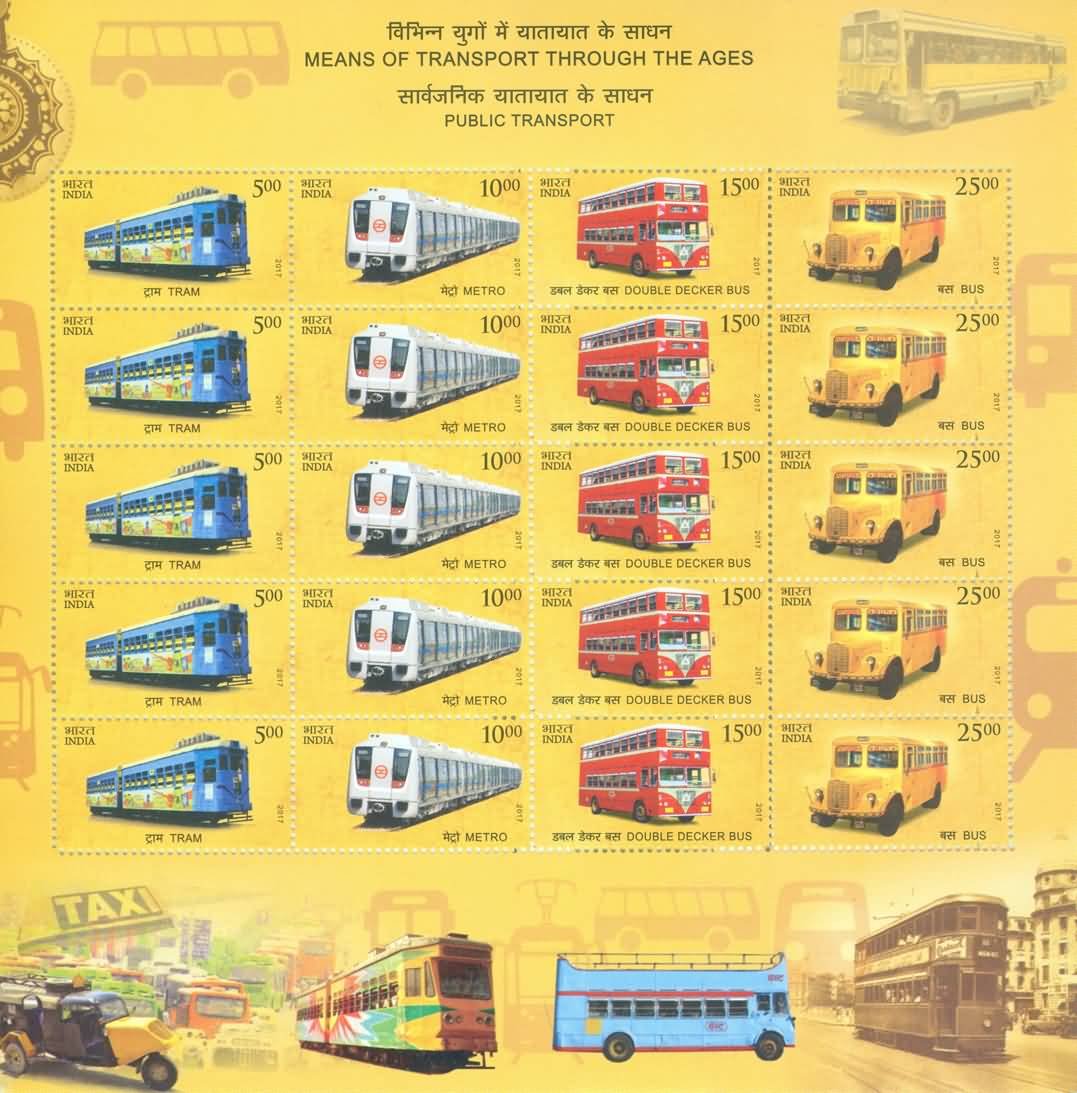Public Transport

Technical Data
| Stamp Set | Means of Transport |
|---|---|
| Date of Issue | March 25, 2017 |
| Denomination | Rs. 275 |
| Quantity | 15,000 |
| Perforation | 13 |
| Printer | India Security Press, Nashik |
| Printing Process | Wet Offset |
| Watermark | No Watermark |
| Colors | Multicolor |
| Credit (Designed By) | Sh. Brahm Prakash |
| Catalog Codes |
Michel IN 3143-3146KB |
| Themes | Buses | Public Transport | Railways | Trams | Transport |
The Lifeline of Social Mobility
Introduction
Public transport forms the backbone of social and economic integration in India. It connects people, facilitates daily commute, strengthens trade and employment, and ensures inclusive mobility for all sections of society. Passenger Road Transport Service (PRTS) plays a vital role in national development by improving accessibility and enabling the overall progress of cities and rural areas alike.
Trams: India’s Earliest Urban Mass Transit
The arrival of the British introduced trams in major Indian cities such as Mumbai and Kolkata. These electrically powered trams brought a new dimension to urban commuting by offering a smooth, reliable, and environment-friendly transport option.
- First introduced in the colonial era
- Kolkata remains the only city in India where trams are still operational
- Known for being an emission-free mode of transport
Trams symbolize a blend of heritage and sustainable mobility.
Buses and Double-Decker Buses: The Most Widely Used Public Transport
Buses constitute over 90% of the public transport system in Indian cities, making them the most accessible and affordable mode of travel for the masses. They connect urban and suburban regions, empower daily workers, and support school and office commuting.
- Economical and convenient for all social classes
- Operate widely within cities and inter-district routes
- Double-decker buses, especially in cities like Mumbai, are cultural icons and remain cherished for their heritage value and large seating capacity
Metro Rail: Modern and Efficient Urban Mobility
The Metro Rail represents India’s significant leap toward modern, rapid, and efficient urban transport. Over the last two decades, metros have transformed commuting in major cities by reducing travel time, easing congestion, and offering a comfortable, safe, and reliable system.
- Now operational in cities like Delhi, Mumbai, Bengaluru, Kolkata, Chennai, Hyderabad, Pune and others
- Helps reduce traffic load and pollution
- Symbolizes India’s movement toward world-class urban transport infrastructure
Significance of Public Transport in India
Public transport systems in India:
- Bridge social and regional gaps
- Enable economic participation for all income groups
- Promote environment-friendly mobility
- Strengthen the link between urban–rural communities
By providing affordable and efficient travel options, public transport remains an essential pillar of national development and social upliftment.
